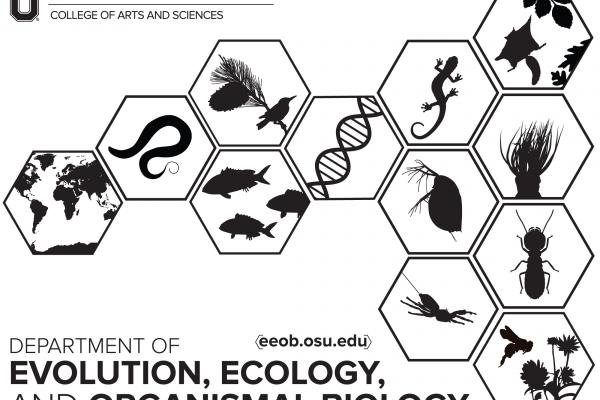October 31, 2018
Publications by EEOB faculty October 1 - October 31

Context is everything: mapping Cyphomyrmex-derived compounds to the fungus-growing ant phylogeny
Hamilton, Natalie & Jones, Tappey & Shik, Jonathan & Wall, Bonnie & Schultz, Ted & A. Blair, Haley & Adams, Rachelle. 2018. Chemoecology. DOI: 10.1007/s00049-018-0265-5
Abstract
Ants communicate using a suite of chemicals with a level of sophistication that is inextricably linked to their ecological dominance. The fungus-growing ants have been the focus of chemical ecology studies for decades, especially the leaf-cutting ants. Some create long, conspicuous foraging trails to harvest fresh vegetation used to sustain large farming systems that feed millions of workers. However, of the ca. 250 fungus-growing ant species, most feed detritus rather than fresh material to their gardens, and colony sizes are tens to hundreds of workers. Colonies within the attine genus Cyphomyrmex use distinct methods of agriculture (i.e., yeast and lower fungus agriculture). We compared compounds found in five species from the yeast-growing Cyphomyrmex rimosus group (C. rimosus and C. salvini) and the lower agriculture Cyphomyrmex wheeleri group (C. costatus, C. longiscapus, C. muelleri). Compounds identified were compared with those reported in the literature and mapped onto the attine-ant phylogeny, and glands of origin suggested. There were 10 compounds across five species and two are known alarm compounds, 1-octen-3-o1 and 3-octanol. Of the six farnesenes detected, the most notable was the diversity of gaster-derived compounds in C. salvini and the high abundance of (3Z, 6E)-α-7-ethylhomofarnesene and α-6-bishomofarnesene in the three C. wheeleri group species. We also found 2,5-dimethyl-3-isoamylpyrazine in the heads of yeast-growing species, an unexpected result because pyrazines are known trail substances in other attines. Our results expand our understanding of semiochemicals found in fungus-growing ants and provides a starting point to generate hypotheses for more extensive comparative studies.
Coded‐wire tag use with juvenile Channel Catfish Ictalurus punctatus: Evaluation of mortality, retention, and growth
Cory Becher Madelyn G Strahan Stuart A Ludsin. 2018. North American Journal of Fisheries Management. doi.org/10.1002/nafm.10238
Abstract
Channel Catfish Ictalurus punctatus is a popular sportfish that is routinely stocked into north‐temperate USA lakes and reservoirs by natural resource management agencies. We experimentally tested the use of an internal, coded‐wire tag (CWT) as a method for nonlethal batch marking of individuals. The retention rate of CWTs and their influence on individual growth and mortality remain unexplored for juvenile Channel Catfish. Both attributes were quantified and compared between age‐0 fingerlings and age‐1 yearlings at various time points (i.e., after 1 week, 2 weeks, 1 month, and monthly thereafter) of our four‐month experiment. For both age‐classes, CWT retention rates were high (90‐100%), with no observed increases on mortality or effects on growth rate. Our findings suggest that CWTs are a reliable, effective means of marking juvenile Channel Catfish. Hence, we recommend their use by management agencies to differentiate hatchery‐reared individuals from wild‐produced ones, which can be useful when assessing the efficacy of stocking programs.
